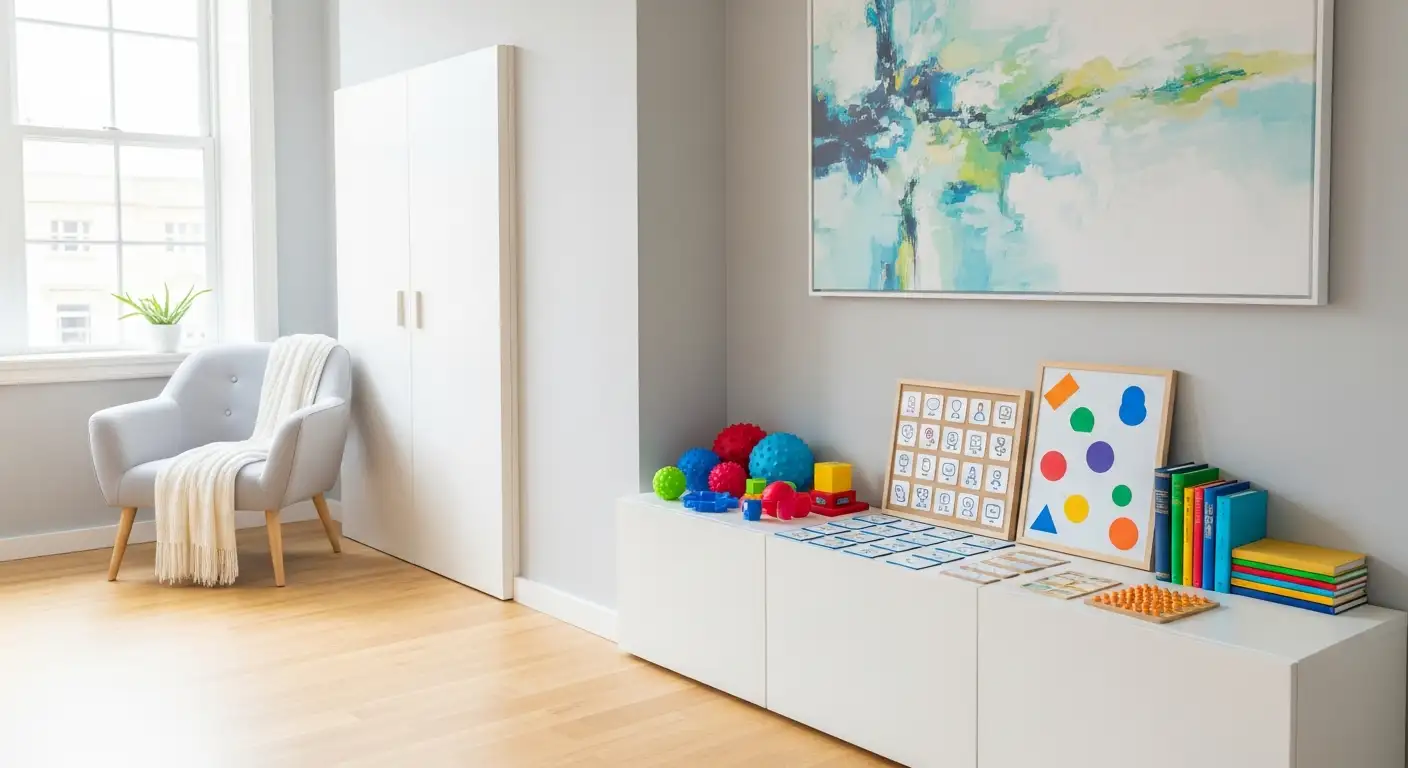Understanding the Path to Accepting Help
Teaching children with autism to accept help requires thoughtful approaches grounded in respect, communication, and evidence-based therapies. Recognizing the unique challenges these children face, families and professionals employ a combination of behavioral, developmental, and therapeutic strategies designed to build trust, foster cooperation, and improve quality of life. This article explores key methods, particularly focusing on Applied Behavior Analysis (ABA) therapy, and complementary approaches that facilitate children's willingness and ability to accept assistance in various environments.
Foundational Communication: Respecting Needs and Emotions

Respecting and Listening to Verbal and Non-Verbal Communication
Effective communication with children on the autism spectrum begins with truly respecting and tuning into both their verbal and non-verbal cues. Children may use a variety of expressions beyond words—like gestures, facial expressions, or body language—to convey their needs or discomfort. By attentively observing and responding to these signals, caregivers and educators can better understand what the child is trying to communicate, promoting a more supportive and inclusive environment.
Validating the Child's Emotions and Concerns
Acknowledging and validating a child's feelings is crucial. Instead of dismissing or overlooking their emotions, it is important to recognize and affirm what they are experiencing. This validation supports emotional security and fosters trust. When children feel understood, they are more likely to engage and cooperate in social and learning activities.
Providing Language to Express Feelings
Many children with autism experience challenges in expressing their emotions effectively. Offering appropriate language tools—such as emotion cards, visual aids, or simple phrases—can help them articulate their feelings. This not only reduces frustration but also empowers them with skills to communicate needs or concerns constructively, enhancing their sense of competence and motivation.
These foundational communication strategies create a respectful, empathetic, and responsive environment that supports positive development and meaningful interactions for children with autism.
Setting Clear Expectations Using Visual Supports

Providing Clear, Visual Expectations of Behavior
Children with autism benefit greatly from clear, visual guidelines that outline what is expected of them. Utilizing visual aids such as photographs, picture cards, or videos can make abstract ideas more concrete. This clarity reduces confusion and helps the child anticipate what comes next, supporting smoother daily routines.
The Tell-Show-Do Method
This approach involves explaining the expected behavior ('Tell'), demonstrating it visually or physically ('Show'), and then encouraging the child to try it themselves ('Do'). By pairing verbal instructions with visual demonstration, children better understand behavioral expectations and can practice them in a supportive setting.
Visual Schedules and Supports to Reduce Anxiety and Promote Understanding
Visual schedules, social stories, and visual task lists serve as powerful tools to ease anxiety in children with autism. They provide a predictable structure by illustrating daily activities and transitions. This predictability not only lessens stress but also enhances the child’s independence and engagement in routines. These supports can be personalized to fit each child's needs, incorporating simple language, images, and cues to facilitate comprehension and cooperation.
Applied Behavior Analysis (ABA): Principles and Providers

What is Applied Behavior Analysis (ABA) therapy?
Applied Behavior Analysis (ABA) therapy is a scientifically validated approach used to improve behaviors and develop skills in individuals with autism spectrum disorder (ASD). Grounded in learning theory and operant conditioning, ABA focuses on encouraging positive behaviors while reducing harmful or challenging ones through techniques like positive reinforcement.
This therapy enhances various areas including social skills, communication, cognitive abilities, and everyday living skills. Each ABA program is customized to the individual's needs following detailed assessments conducted by trained behavior analysts. ABA can be delivered in multiple settings such as the home, school, or community, making it widely adaptable. It is recognized as a best practice by many healthcare organizations due to its effectiveness in promoting independence and improving quality of life, while honoring each person's unique strengths and differences.
Who provides ABA therapy and their qualifications?
ABA therapy is provided by a team of professionals with specialized training. The most highly qualified are Board Certified Behavior Analysts (BCBAs), who usually hold graduate or doctoral degrees in behavior analysis, psychology, or related fields. They complete supervised practice hours and pass a certification exam to earn their credentials.
Registered Behavior Technicians (RBTs) are paraprofessionals who receive focused training, pass certification tests, and work directly with clients under close supervision of BCBAs. Behavioral Analyst Assistants (BCaBAs) support the team by assisting with assessments, data collection, and overseeing RBTs.
Family involvement is critical throughout the process, with qualified professionals designing individualized treatment plans and monitoring progress carefully to ensure success. This collaborative team approach maximizes the benefits of ABA therapy for individuals with autism.
Techniques and Strategies Within ABA to Foster Acceptance of Help

What kinds of techniques are used in ABA therapy?
ABA therapy employs several evidence-based techniques to enhance learning and behavior management. Discrete Trial Training (DTT) uses step-by-step, structured instruction with clear prompts and immediate reinforcement to teach new skills. Natural Environment Teaching (NET) integrates learning opportunities into daily routines, promoting generalization of skills in real-life settings.
Prompting and fading strategies help support a child's independence by providing assistance when needed and gradually reducing it. Behavioral chaining breaks down complex sequences into smaller steps, making tasks more manageable. Modeling and video modeling show desired behaviors, helping children understand and imitate appropriate actions.
How do positive reinforcement and prompting contribute?
Positive reinforcement is a core principle in ABA, strengthening desired behaviors by rewarding them consistently. This could involve verbal praise, tokens, or access to preferred activities. Prompts guide the child toward the correct response, which are carefully faded over time to encourage autonomy.
Ignoring behaviors that are not communicative serves as extinction, reducing those behaviors effectively when paired with team consistency.
What role do natural environment teaching and visual aids play?
Natural Environment Teaching embeds learning within everyday interactions and activities, making skills more relevant and easier to apply. It fosters motivation by including preferred tasks and interests.
Visual aids like picture schedules, photographs, or videos clarify expectations and routines, reducing anxiety and improving understanding. Tools such as PECS (Picture Exchange Communication System) and other augmentative communication devices support functional communication, allowing children to express needs and reduce frustration.
Together, these techniques in ABA create a supportive structure that encourages children with autism to accept help, participate actively, and develop essential skills in a motivating and respectful manner.
Evidence Supporting ABA’s Role in Acceptance and Independence

What evidence supports the effectiveness of ABA therapy?
Applied Behavior Analysis (ABA) therapy is backed by extensive research spanning over four decades, firmly establishing its effectiveness for individuals with autism spectrum disorder (ASD). Scientific studies including randomized controlled trials, single-case designs, and controlled case-series consistently show that ABA interventions improve communication skills, socialization, and cognitive abilities.
ABA’s emphasis on functional analysis allows therapists to identify the underlying causes of challenging behaviors, such as aggression or self-injury, enabling tailored interventions that reduce these problematic behaviors. Clinical evidence reveals that early, intensive, and long-term ABA programs contribute significantly to gains in intellectual functioning and adaptive behavior, thereby increasing a child's independence and quality of life.
How does ABA improve socialization, communication, and reduce challenging behaviors?
ABA uses positive reinforcement and structured teaching methods to encourage desired behaviors and decrease maladaptive ones. Social skills training, often integrated within ABA, helps children learn peer interaction, nonverbal communication, and emotional regulation through modeling and role-play.
By teaching functional communication—whether through speech, sign language, or picture aids—ABA reduces frustration that can lead to tantrums or aggression. This communication focus fosters acceptance by enhancing interaction opportunities and self-expression.
As a result, ABA not only diminishes problematic behaviors but also promotes social inclusion and autonomy, empowering individuals with autism to participate more fully in everyday activities.
| Aspect | Evidence Source | Impact Highlighted |
|---|---|---|
| Communication improvements | Randomized controlled trials | Enhanced expressive and receptive language skills |
| Social skills development | Single-case experimental studies | Better peer interactions and emotional regulation |
| Behavior reduction | Functional analyses within ABA | Decreased aggression, self-injury, and other challenging behaviors |
| Long-term developmental gains | Controlled case-series and longitudinal studies | Sustained improvements in adaptive behavior and intellectual functioning |
Complementary Therapies to Support Acceptance of Help
Speech and Language Therapy for Communication Enhancement
Speech and language therapy plays a crucial role in helping children with autism improve both verbal and non-verbal communication skills. This therapy often includes the use of augmentative and alternative communication (AAC) devices, picture exchange communication systems (PECS), and sign language. By developing effective communication, children can better express their needs and emotions, reducing frustration and challenging behaviors.
Occupational Therapy for Independent Daily Living Skills
Occupational therapy (OT) focuses on enhancing a child's ability to perform everyday tasks such as dressing, brushing teeth, and feeding themselves. OT may also incorporate sensory integration therapy to help manage responses to sensory stimuli, promoting increased independence and confidence. Adaptive tools and strategies provided during therapy help set the child up for success in their daily routines.
Cognitive Behavioral Therapy (CBT) for Emotional Regulation
Cognitive Behavioral Therapy is effective primarily for adolescents and young adults with autism. CBT helps manage anxiety, obsessive behaviors, and emotional regulation by teaching coping skills such as deep breathing and self-affirmation. This therapy supports individuals in understanding and adjusting their thought patterns, leading to improved emotional well-being and greater acceptance of help.
These complementary therapies, when combined with behavioral interventions, create a well-rounded support system that promotes communication, independence, and emotional resilience for individuals with autism.
Practical Behavioral Strategies for Encouraging Cooperation
Celebrating strengths and successes through positive feedback
Recognizing and celebrating a child's achievements builds motivation and a strong sense of competence. Offering positive feedback for desired behaviors encourages ongoing cooperation. For example, praising effort or progress with specific, encouraging language helps reinforce confidence and engagement.
Providing choices within parameters to promote control
Giving children choices within set boundaries fosters a feeling of control and cooperation. Allowing them to decide the order of activities or select between two acceptable options empowers them while maintaining structure.
Using calm-down spaces for regulation
Designating a calm-down area provides children with a safe place to self-regulate emotions without punishment. This supports emotional literacy and encourages children to take breaks when overwhelmed, improving overall behavior and cooperation.
Alternating tasks to reduce frustration
Mixing challenging tasks with preferred or easier activities helps reduce frustration and prevent behavioral difficulties. Introducing tasks the child enjoys or has success with before more demanding ones helps sustain motivation and a positive attitude.
These behavioral strategies combine respect for the child's needs with structured support, promoting cooperation in a nurturing and effective manner.
Building Supportive Environments and Family Involvement
How Does Parent and Caregiver Training Enhance Support for Children with Autism?
Parent and caregiver training is essential in promoting consistent application of behavioral strategies at home, which supports better long-term outcomes for children with autism. Training equips caregivers with techniques such as gaining the child's attention, offering meaningful choices, and encouraging social interactions, thereby creating a nurturing and stable environment that complements therapeutic interventions.
Why Are Consistent Team Approaches Important When Dealing with Challenging Behaviors?
Consistent team approaches are crucial in addressing challenging behaviors that do not serve as communication. By ignoring non-communicative challenging behaviors and working collaboratively, families and professionals help reduce maladaptive behaviors. This unified approach ensures the child receives coherent and effective guidance across all settings, promoting behavioral improvements.
How Can Sensory-Friendly Spaces Benefit Children with Autism?
Creating sensory-friendly spaces supports children with autism in managing sensory overload and maintaining focus. These spaces are equipped with tools like noise-canceling headphones, fidget toys, and weighted blankets to provide comfort and reduce anxiety. Such accommodations foster a calm environment conducive to learning and regulation.
What Strategies Foster Positive Peer Relationships and Social Skills?
Fostering positive peer relationships is achieved through group activities, buddy systems, and modeling social behaviors. These approaches help children with autism develop vital social skills and self-advocacy, enhancing their inclusion and confidence in social settings.
| Aspect | Description | Benefits |
|---|---|---|
| Parent and Caregiver Training | Teaching strategies to support child development and consistency in interventions | Improved behavior and skill generalization |
| Consistent Team Approaches | Unified response to behaviors across caregivers and professionals | Reduction in maladaptive behaviors |
| Sensory-Friendly Spaces | Environments with sensory tools like noise-canceling headphones and fidget toys | Decreased anxiety, better focus |
| Peer Relationships and Social Skills | Structured social activities and modeling behaviors | Enhanced social competence and inclusion |
Empowering Children with Autism to Accept Help with Respect and Evidence-Based Care
Teaching children with autism to accept help is a multifaceted process that blends respect for communication challenges, strategic behavioral interventions, and supportive environments. Applied Behavior Analysis (ABA) therapy forms a central pillar, offering personalized, research-backed techniques that enhance communication, reduce problematic behaviors, and foster independence. Complementary therapies such as speech-language and occupational therapy further empower children by addressing communication and daily living skills. Practical strategies like positive reinforcement, providing choices, and accommodating sensory needs build trust and cooperation. Crucially, family and caregiver involvement ensures continuity and consistency, creating a nurturing space where children feel safe to accept assistance. Together, these combined approaches support children's growth, enabling them to embrace help and thrive in their daily lives.
References
- Helpful strategies to promote positive behavior
- Treatment for Behavioral Issues in Autism
- 10 Essential Behavioral Therapy Techniques for Autism ...
- Effective Classroom Strategies for Teaching Students with ...
- Autism Therapy Types & Interventions
- Treatment and Intervention for Autism Spectrum Disorder
- Who Qualifies for ABA Therapy: Eligibility Guide
- Understanding Your Child's ABA Therapy Providers














